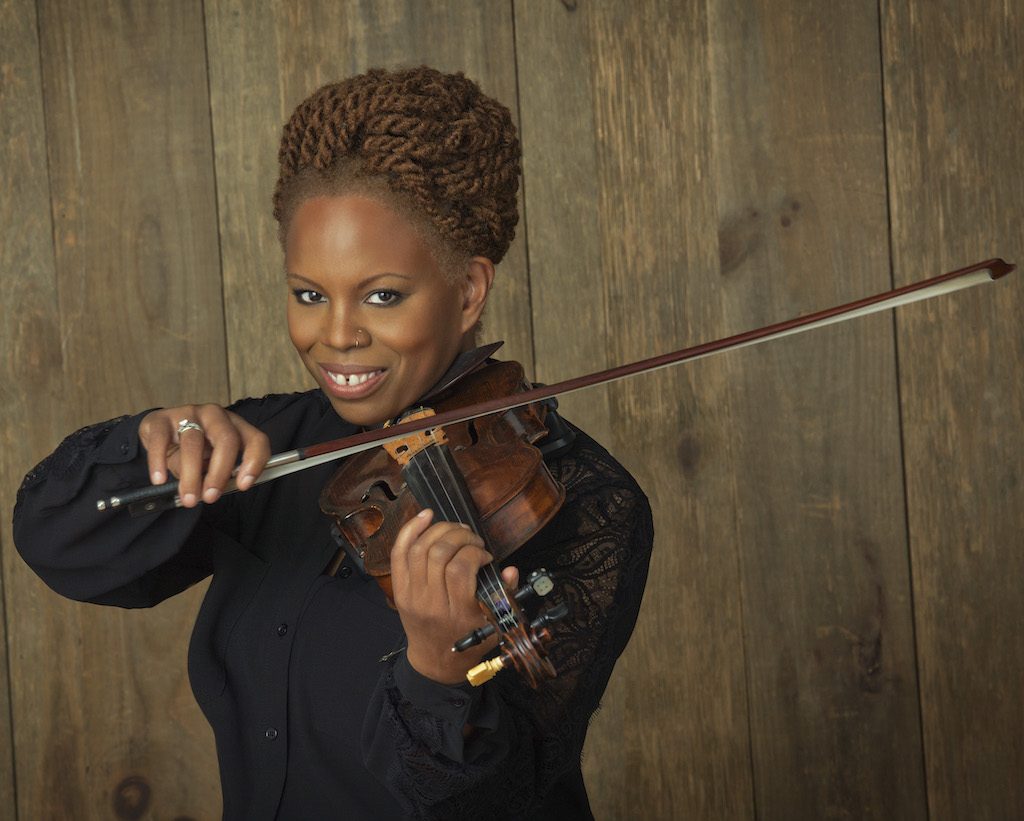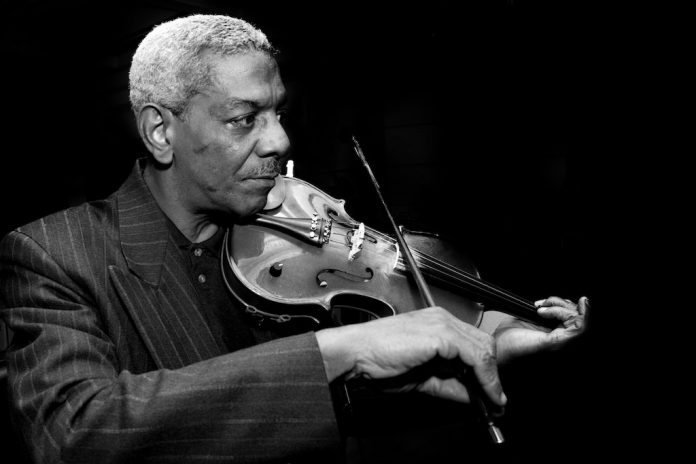In jazz history there seldom appears to be any middle ground for the violin. Fans either love it or hate it. Almost from the start, the instrument has often been derided or at best ignored.
If the average jazz fan – always assuming that such creatures exist – were to be asked to list favourite instrumentalists what might be the result? Quite a few trumpeters and pianists, some alto saxophonists, and there will be tenor saxophonists by the truck load. Maybe there will be an occasional trombonist and a handful of guitarists (if the fan questioned is young, a whole lot more than a handful), while older fans might well list a clarinettist or two, and few if any bassists or drummers will appear.
But regardless of age, background or musical taste, how many of the jazz fans asked to nominate a favourite instrumentalist will choose a violinist? Probably none of them, even though the violin was involved in jazz music at its start.
In New Orleans at the turn of the century almost all of the music was of European origin and the instrumentation required to play it included violins
Back in the very earliest days when the new music was being tried out in dance halls and juke joints, most bands had at least one violin and in many the violinist was leader. Not surprising, really. Consider the music scene in, for example, the city of New Orleans at the turn of the century. Music of all kinds was everywhere, including three opera houses, and hundreds of musicians were needed. Given that almost all of the music being played, whether in theatres or dance halls or clubs, was of European origin, or at least in that tradition, the instrumentation required to play it included violins, often several of them. Being able to play a violin well (and read music) almost guaranteed work and violinists of the era thrived.
As new forms of dance music became popular, however, that changed. This new music took on board the early strains of what would come to be known as jazz and as it did so the violin was nudged aside. This was not because of any failing on the part of the players; they were highly skilled practitioners and could read and play anything put before them.
But this was long before amplification was even thought of and the new music was loud. The violin was simply drowned out by the trumpet and trombone and quite soon the unwritten standard combo format took shape: trumpet, trombone, clarinet (even this had to struggle against the brass), piano, banjo, tuba and drums. A few years on, the string bass replaced the tuba and the guitar elbowed out the banjo and in the wake of these changes experiments with amplification were made. These allowed guitarists to make themselves heard, eventually with startling results throughout pop music. In time, some violinists also experimented with amplification, but by then the violin had been too long in the wilderness and for all practical purposes its numerous qualities as a front-line instrument were lost to jazz.
As the swing era developed and orchestra size increased the problems for the violin increased. It was hard enough competing with one trumpet and one trombone – entire sections of brass were impossible sound barriers. Some tried; a few sidemen in the big bands occasionally played violin but those that did so were doubling with another more “acceptable” instrument, among them Claude Williams, Ray Perry and Ray Nance. Swing-era bandleaders such as Artie Shaw and Gene Krupa dabbled with a string section but these proved to be economically unsustainable. Of course, there were a few jazz violinists who hung on through the years of the swing era. For example there were Emilio Caceres (who brought a torrid touch of norteño to jazz in Texas), Eddie South (classically trained, with a gracefully melodic approach to jazz), Joe Venuti (notably in his collaborations with guitarist Eddie Lang), Stuff Smith (especially as co-leader with trumpeter Jonah Jones of the Onyx Club band) and a little later John Frigo (who with Herb Ellis and Lou Carter formed Soft Winds).
Joe Venuti clearly enjoyed being teamed with another instrumentalist. This is apparent from the near-telepathic understanding he had with Eddie Lang that is demonstrated during their all-too-brief association, which has often been reissued (Chestnut and Fabulous labels). In later years, Venuti’s strengths developed as can be heard on his sessions with Earl Hines (Chiaroscuro), Dave McKenna (Chiaroscuro) and Scott Hamilton (Concord Jazz). Whether playing solo or in duets with his co-leaders, Joe Venuti is always inventive and swings ferociously, his appearance with George Barnes at the Concord Summer Jazz Festival being exemplary (Concord Jazz). Among Stuff Smith’s albums are collaborations with Dizzy Gillespie and Oscar Peterson (PolyGram), Herb Ellis (Epic), Stéphane Grappelli (Barclay) and Svend Asmussen (Storyville). Always driving, Smith vividly displays his take-charge persona throughout these sets. On the two occasions he is teamed with another violinist his style is in striking contrast and makes clear that he was one of the most commanding performers in jazz, regardless of the instrument played. In later, post-bop years, both Venuti and Smith enjoyed a resurgence of popularity.
Perhaps unsurprisingly, it was not only in America that jazz violin survived. Among artists at the other side of the ocean were Grappelli and Asmussen, both leading long and fruitful jazz lives that extended into the post-bop years. Also in later decades, technical developments ensured that the violin could be heard in almost any environment and several musicians took advantage of this. Often this came in jazz-rock fusion groups where amplification is commonplace. In these settings, the electric violin can and does compete comfortably with similarly amplified guitar, bass and keyboards. Among musicians of these years, for whom the violin was the first if not the only choice of instrument and who brought the violin into vivid contact with contemporary aspects of jazz, are Jean-Luc Ponty, Leroy Jenkins, John Blake, Michal Urbaniak, Zbigniew Seifert and Billy Bang, some playing on into the 21st century.
Deeply immersed throughout his career in jazz-rock fusion, Ponty is also a gifted composer. In this role, he draws upon various aspects of both jazz and rock creating often complex swirling clouds of music. In these works, the sonic aggression that is a frequent ingredient of rock is underpinned by an urgent rhythmic drive. Over this, Ponty improvises vibrant and imaginative solos. Thoroughly contemporary, blending post-bop echoes with improv, Billy Bang always shines. His instrumental virtuosity is underpinned by his seemingly limitless imagination and a striking ability to find musical images from earlier eras that fit admirably into latterday musical concepts. He has collaborated with William Parker (Thirsty Ear) and can also be heard front and centre (Justin Time) and as a member of FAB Trio (CIMP and TUM).
Close to the jazz core in all that she does, Regina Carter is a remarkable musician. At ease playing popular songs and show tunes, she also takes a new look at jazz standards
Among classically trained violinists who have achieved success in jazz in recent years are Nigel Kennedy, Lucia Micarelli and Regina Carter. First attracting attention as a classical violin prodigy, Nigel Kennedy’s career remained centred on the classical repertoire but he happily embraced pop and jazz. Through his eclectic musical choices he has developed a following when playing in several genres and he continues to prove popular with the younger audience. Lucia Micarelli studied at Julliard and the Manhattan School of Music and in her subsequent career is at ease in both classical and jazz, her debut album allowing her to demonstrate her seemingly effortless skills (143/Reprise). She has also toured and recorded with Chris Botti. In the television series, Treme, which is set in post-Katrina New Orleans, her acting skills proved notable and she appeared in every episodes of all four series. In Treme she plays violin in several genres – classical, jazz, country, bluegrass, folk.

Regina Carter (pictured) began studying violin from the age of four, playing in a youth orchestra in Detroit and attending master classes under Itzhak Perlman and Yehudi Menuhin. She then briefly studied classical violin at the New England Conservatory of Music before deciding on pursuing jazz, which she studied at Oakland University. After graduating in 1985, she taught in schools in Detroit then moved to Germany where she continued to teach. Close to the jazz core in all that she does, Carter is a remarkable musician. At ease playing popular songs and show tunes, she also takes a new look at jazz standards. A fine example of her improvisational skills came on a duo set with Kenny Barron on Verve. She also explores the rich tapestry of African folk music, creating eloquent contemporary jazz statements on the appropriately entitled Reverse Thread (E1 Music). In all that she does, Regina Carter is never less than exceptional.
What is apparent from all the violinists named here is that the recorded evidence clearly demonstrates their considerable musical gifts. In many instances they display improvisational skills at least on par with better-known contemporaries who played trumpet or piano or tenor saxophone. Indeed, if analysed fairly, violinists such as Venuti, Smith, Bang and Carter tick more boxes than many poll-toppers whose playing of brass and woodwind instruments has blinded some fans (and writers) to the fact that, if judged impartially as musicians, they are distinctly less gifted.
Earlier, I used the words “love it or hate it”. If you already love jazz violin, then nothing more need be said. However, if you are currently in the other camp, then perhaps your curiosity has been aroused. I certainly hope so.
















